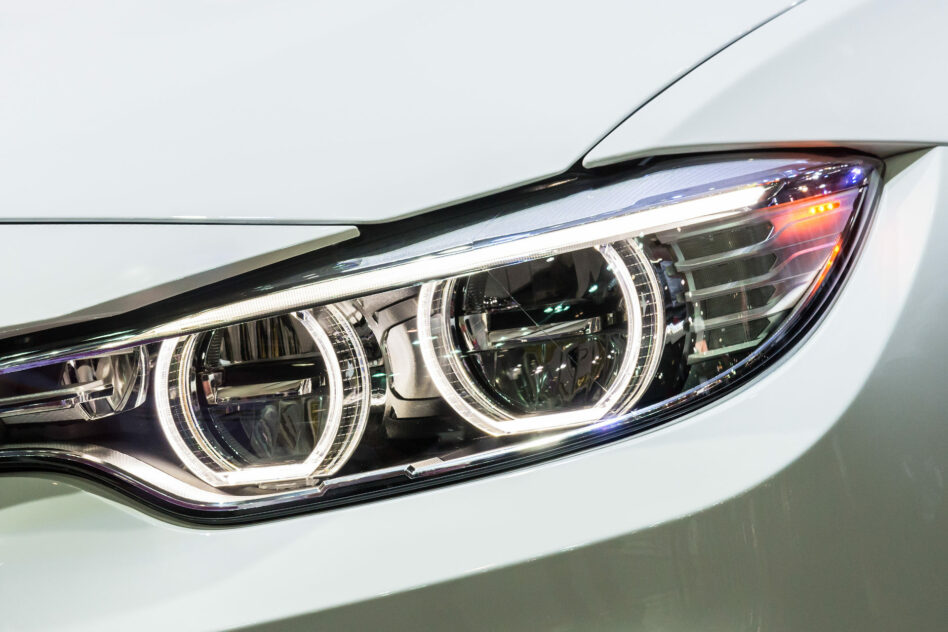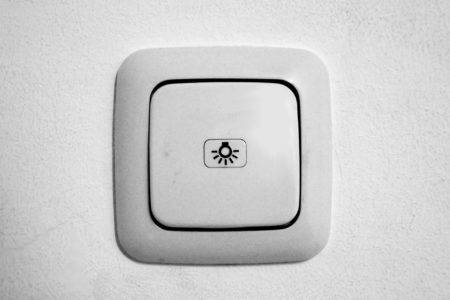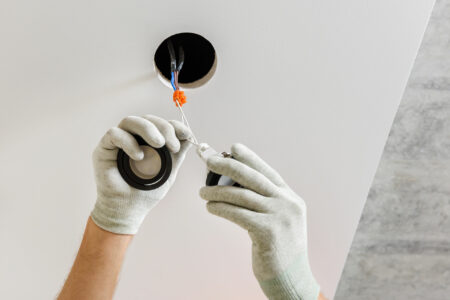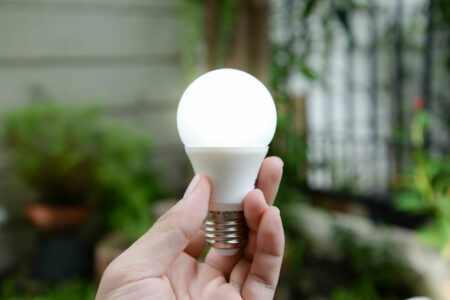Do you love late-night road trips? Exciting! But reliable headlights are a must-have. Need help deciding between LED vs. halogen headlights? Let’s guide you through the differences so you can choose the best option for a safe and enjoyable drive.
How LED Headlights Work
LED headlights are a type of car lighting that uses light emitting diodes. They don’t use a filament and light up with electricity. And let us tell you, they’re pretty cool! They’re energy efficient and long-lasting.
Nighttime driving requires a precise and concentrated beam of light. LED headlights can offer this feature. Plus, they don’t use as much power, so your car’s battery and gas tank will last longer. It’s no surprise that LED headlights have become super popular recently!
All about Halogen Headlights
Halogen Headlights are car lighting that uses halogen gas to make bright light. Electricity flows through a tungsten filament. Then, it heats it and produces the light we need.
The best part? Halogen headlights are super affordable and easy to replace. They won’t break the bank, and if one burns out, there’s no need to stress! You can change it for a new one without fancy equipment or a mechanic.
They’re not the most energy-efficient or long-lasting headlights out there. Still, they’re famous for being super practical and easy on your wallet.
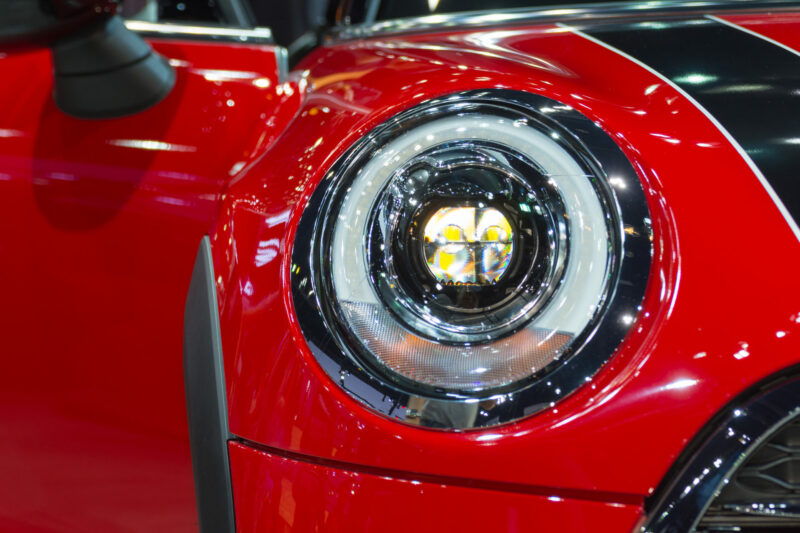
LED vs. Halogen Headlights: Comparison
Never underestimate the importance of choosing headlights for your car! It’s a crucial decision that can make a real difference in your driving experience. You don’t want to be in a sticky situation where poor headlights cause trouble for you—or even worse, for others.
LED and halogen headlights are popular types of headlights available in the market. Each has its advantages and disadvantages. So, what’s better for your car? In this section, we’ll discuss their features and characteristics.
LED Headlights: Illuminating the Pros and Cons
LED headlights are the hot trend on the road! They have a sleek and stylish design that adds sophistication to any vehicle. Read on to find out why they’re awesome.
Brightness
LED headlights are a popular alternative to traditional headlights. They produce a brighter and more intense light than conventional headlights. This characteristic improves visibility during nighttime driving and adverse weather conditions.
As you know, enhanced visibility can help drivers see road signs. After all, having a clear vision leads to a safer driving experience.
Energy Efficiency
LED headlights are more energy-efficient than their traditional counterparts. They need less power to produce the same brightness level. These features reduce fuel consumption and energy savings in the long run.
Life Span
Additionally, LED headlights have a longer lifespan than typical ones. They last up to 25,000 hours on average. This extended lifespan can result in significant cost savings. You’ll also save a lot on replacement and maintenance expenses.
Cost
The initial cost of LED headlights can be higher than the others. But their longer lifespan can offset this cost difference over time.
Ease of Installation
LED headlights can be more complex to install. They need technical expertise and specialized tools. This installation complexity can increase the installation cost. However, LED headlights’ benefits can make the investment worthwhile.
Halogen Headlights: Benefits and Drawbacks
Halogen headlights may not be the latest in the market. Although, they’re definitely a tried-and-true option for many drivers out there. They’ve become a popular choice for their reliable and consistent performance. Let’s shed some light on the characteristics of Halogen headlights.
Brightness
Halogen headlights offer adequate visibility for most driving situations. Yet, they may be less effective on lit roads or during bad weather.
Energy Efficiency
Halogen uses more power to produce the same brightness level as LED headlights. Its usage can lead to higher fuel consumption over time. So, they’re not as energy efficient as LED headlights.
Lifespan
These headlights have a shorter lifespan than LED headlights. They can last up to 1,000 hours. You may need to replace them more often, which adds to the cost of ownership.
Cost
Halogen headlights are generally less expensive than LED headlights up front. It’s perfect for drivers looking for a cheaper option. After all, you’ll need to replace them from time to time.
Ease of Installation
They’re generally easier to install than LED headlights. They need less technical expertise and fewer specialized tools. The installation process saves you time and keeps the cost at a minimum.

How to Choose the Right Headlights for Your Car?
The answer depends on many factors. Considering the driving conditions, vehicle models, and personal preferences will help. Halogen headlights may be suitable for older vehicles with lower electrical output. Yet, LED headlights may be better for newer cars with advanced electrical systems.
It can be a tough decision to pick LED vs. Halogen headlights for your car, especially when both options have pros and cons. Read the tips below to help you weigh the consequences of your option.
Check Your Car’s Compatibility
Before selecting headlights for your car, ensure they’re compatible with your vehicle. Different cars have different electrical systems and wiring configurations. Not all headlights will work with every vehicle.
Some headlights need modifications or extra hardware to work with specific vehicles. Researching will help you avoid any installation issues. It’ll also prevent compatibility problems down the road.
Assess Your Driving Needs
Another critical factor to consider when choosing headlights is assessing your needs. Every driver has different requirements for headlights. It all comes down to their driving environment and frequency of driving.
For example, you may drive on dark, winding roads a lot. In that case, you may need long-range or higher-brightness headlights. Or, you may need less light if you travel in areas with street lights.
Consider Your Budget
Headlights come in different price ranges. It’s crucial to consider your budget when selecting them. While LEDs may offer better brightness and energy efficiency, they can be costly.
On the other hand, halogen headlights are cheaper and readily available. Still, they may provide a reduced level of brightness or lifespan than LEDs.
Check Your State’s Regulations
When selecting headlights, it’s also essential to consider your state’s regulations. Some states have specific laws about headlights’ brightness and color temperature.
Failure to follow these laws could result in fines or even a failed vehicle inspection. So, it’s crucial to research your state’s regulations before installing a headlight.
Consider the Installation Process
Another factor to consider when selecting headlights is the installation process. Some headlights may be easy to install. Others may need special handling or professional installation.
If you have experience with car repairs, you can install the headlights yourself. And if not, it’s best to have a professional handle it.
Think About Aesthetics
Looks matter, too, when choosing headlights. But safety and functionality should be your primary concern. Some drivers prefer the sleek, modern look of LED headlights. Others prefer the classic look of halogen headlights.
Additionally, some headlights may come with different color temperatures. This feature can affect your car’s look and feel.
LED vs. Halogen: Environmental Impact
LED headlights and Halogen headlights have different environmental impacts. When making a decision on headlight selection, kindly consider the ecological implications.
Here’s a comparison between the two:
Energy Efficiency
LED headlights use 75% less energy than halogen headlights. It means they need less fuel to run. Less energy always results in reduced carbon emissions.
Toxicity
Halogen headlights contain small amounts of toxic gasses, such as bromine and iodine. These gasses can be harmful to the environment. In contrast, LED headlights don’t contain contaminants, making them more eco-friendly.
Manufacturing
LED headlights go through more complex manufacturing processes than halogen headlights. This process can result in a higher environmental impact during the production phase.
Disposal
LED headlights are generally more difficult to recycle than halogen headlights. This is because of the complex materials used in their production. Yet, the longer lifespan of LED headlights means they create less waste over time.
LED and Halogen Headlight Maintenance
Maintaining your LED and halogen headlights is crucial for their optimal performance. Here are tips to help you keep your headlights in good shape:
Clean Your Headlights
Over time, headlights can accumulate dirt, debris, and other contaminants. Clean your headlights with a microfiber cloth and mild detergent.
Replace Burned-Out Bulbs
If you notice that one of your headlights has burned out, replace it as soon as possible. It’ll help you avoid reduced visibility and maintain optimal performance.
Don’t Touch the Bulbs
Avoid touching the glass with your bare hands when replacing the headlight bulb. Oils can cause the bulb to burn out. Use gloves or a clean cloth to handle the bulb.
Use Appropriate Cleaning Products
When cleaning your headlights, use suitable products that are safe for the lens. Never opt for abrasive cleaners, which can scratch the surface of the lens.
LED or Halogen Headlights: What’s Better For Your Car?
Choosing the proper headlights for your car is vital for safe and night driving. LED headlights are a modern and energy-efficient option. Halogen headlights are more affordable and practical. Consider your car’s compatibility and personal preferences to make the best choice.
